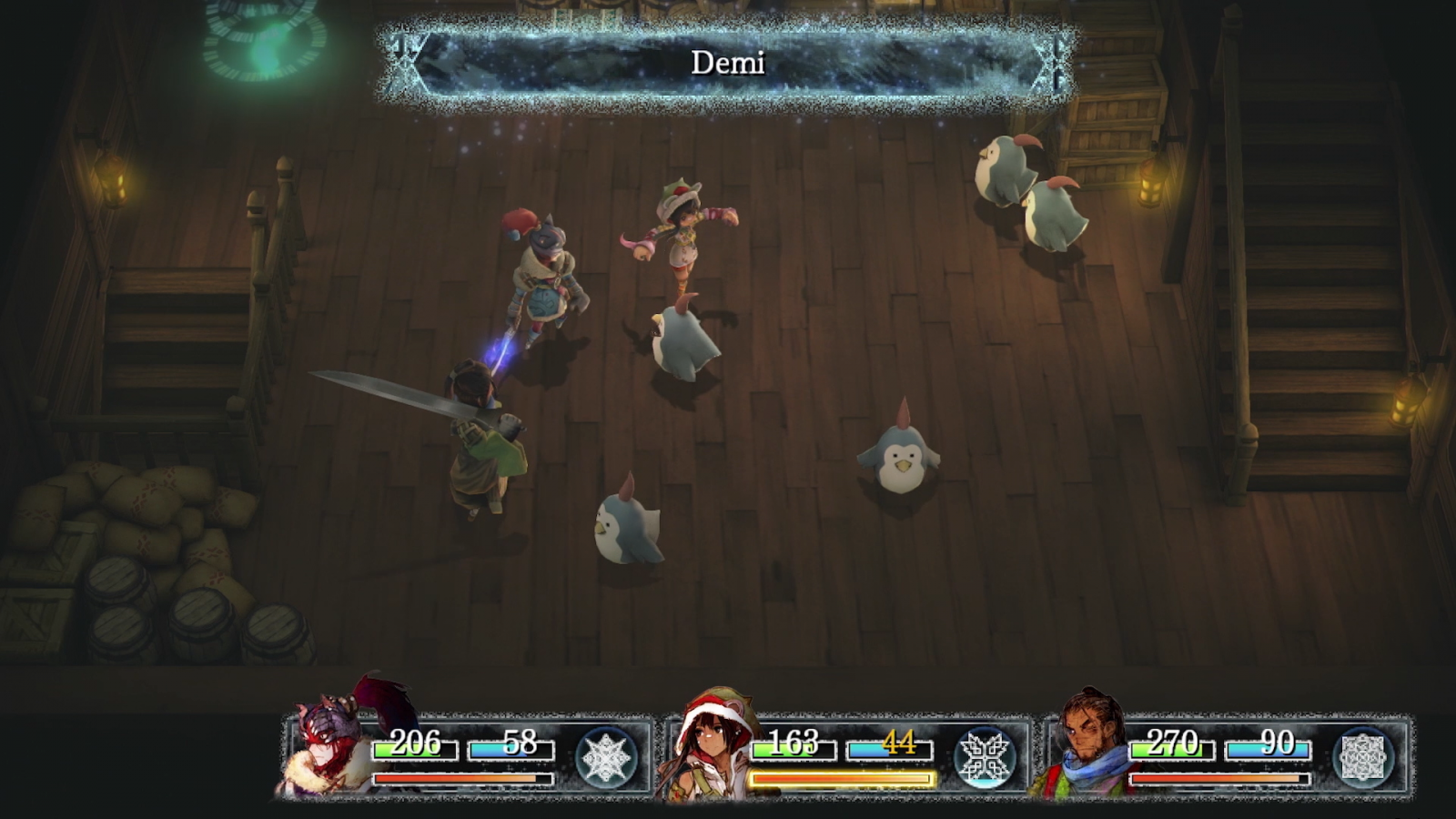I Am Setsuna review: Tokyo RPG Factory's love letter to genre classics lacks heart
Square Enix-published adventure inspired by Chrono Trigger is a frustrating but functional nostalgia trip.
I Am Setsuna
Platforms: PS4 (tested), PC
Developer: Tokyo RPG Factory
Publisher: Square Enix
Release Date: Out Now
I Am Setsuna marks the debut of developer Tokyo RPG Factory – a Square Enix-owned studio comprised mostly of freelance staff with a simple, singular mission: create new RPG adventures inspired by genre classics.
The studio's name strikes an odd chord from the very start, connoting soulless reproduction on a mass scale. Yet while I Am Setsuna clearly has pure, honest intentions, its chilly, snow-covered overworld also mirrors its cold, charmless heart.
Things start of promisingly as we are introduced to the game's lead character – a mercenary (in every sense of the word) named Endir who is searching for a lost child, not for glory or any sense of compassion, but for the cash bounty.
After 'saving' the victim from various winter-themed monstrosities, Endir is tasked with hunting down the eponymous Setsuna – a young girl destined to journey to the Last Lands before sacrificing her life to quell the increasing number of beasts invading the game's frost-bitten world.
During I Am Setsuna's development, director Atsushi Hashimoto made no qualms in interviews about how heavily the game has been inspired by the Japanese RPG masterpiece, Chrono Trigger. The comparison is purely a mechanical one in reality, with I Am Setsuna's isometric Active Time Battle combat lifted from 1995's time-hopping adventure with some minor tweaks.
Soon after Endir inevitably joins forces with his would-be target on her doomed pilgrimage, you are given control of up to three characters for each enemy encounter – all of which only appear in scripted instances or pre-determined combat 'zones', leaving nothing in the overworld apart from gradually traipsing to your next destination.
Once in battle with the game's underwhelming array of killer cartoon penguins, giant turtles and big-eared bunnies, each character's turn is governed by an action bar that builds over time. Filling the bar allows you to fire off a physical attack or use a "Tech" (essentially secondary magic attacks / supports). The slight alteration from the ATB system of yore comes in the form of Momentum – another gauge which fills once a character has an available turn and after each hit. Momentum is activated by tapping the attack button at the same time the corresponding character attacks.
This QTE-lite addition brings a welcome re-active edge to Chrono Trigger's rarely replicated formula. Unfortunately, I Am Setsuna also decides to double down on the kind of obtuse, poorly-explained stat systems of the very worst modern Japanese RPGs. I could spend at least half of this review listing my grievances with the randomly-occuring Fluxation and Singularity mechanics, the awkward Talisman and Spritenite systems and the game's host of alienating terminology such as "Unscathed Power" and "Combo Release", but I won't for the sake of my own sanity.
Coupled with the fact that your characters are somehow naturally overpowered to a ludicrous degree in the game's latter half (even if you ignore the incomprehensible 'boosts'), what starts out as a satisfying, engaging slant on a beautifully simplistic RPG battle system descends into a slow, monotonous grind - Encounter, Cyclone, rinse, repeat.





Unfortunately, the tedium continues away from combat, with each new town vaguely resembling the last due to the constant re-use of assets. From the smallest villages to the larger towns, I Am Setsuna's populated areas largely consist of the same houses, same NPC models and the same grinning snowman model.
The disappointment continues with the main cast – a selection of bland, rote Japanese RPG tropes lacking any charm or depth. There's the conflicted, androgynous lead, the young, female sacrificial lamb (read: Yuna from Final Fantasy 10), her protective friend and the fallen knight who comes to learn that his journey isn't over just yet. The beautifully archaic line "I never imagined the captain would be a woman" also pops up at one point. Lovely.
This hurts all the more, as the game's central themes of sadness, sacrifice and the inevitability of ancient superstitions promises so much in fleeting moments. At times, the game's hushed, wintry ambiance threatens to mask I Am Setsuna's stereotypical characters, gameplay niggles and the game's significant portions of backtracking in the second half of the 20-25 hour adventure / pilgrimage.
Aside from the asset repetition (possibly a product of the relatively short two year development span using the Unity engine) the art design is gorgeous and partners well with Tomoki Miyoshi's lulling score. The use of solo piano arrangements is a bold stylistic choice, but aside from the interminable in-battle piece (please stop hitting the keys) the overall soundtrack sets the tone perfectly.
In spite of its myriad frustrations, I Am Setsuna is far from a characterless husk, but its mechanical regurgitation of shallow tropes and the over-complication of a ready-made battle system manages to cast a dim light on its reserved tone and glacial atmosphere. Designed to be a reverential ode to cherished RPG classics, I Am Setsuna is a functional footnote rather than a sweeping fresh stanza.
For all the latest video game news follow us on Twitter @IBTGamesUK
© Copyright IBTimes 2025. All rights reserved.



















